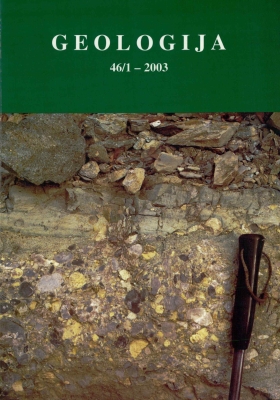Stability analysis of underground openings for extraction of natural stone
DOI:
https://doi.org/10.5474/geologija.2003.017Abstract
Extraction of natural stone is usually carried out in surface quarries. Underground excavation is not a frequently used method. Due to the restrictive environmental legislature and limited stores of natural stone, underground extraction has become quite an interesting alternative. Dimensions of underground openings are determined with stability analyses. Prior to starting a numerical analysis of a large underground opening it is very important to determine the mechanism of failure and set up a proper numerical model. The continuum method is usually used in rock mechanics. A disadvantage of this calculation is that it cannot be applied to a large number of joints. Other methods are preferred, such as the numerical discrete method, which allows joint systems to be involved into calculations. The most probable failure of rock with several joint systems is block sliding. In the example of the marble of Hotavlje both methods were used. It was established that the continuum method is convenient for the global stability prediction of the underground opening. Further discrete method enable the block stability calculation. The analytical block analysis is still accurate for the a stability calculation of single block. The prerequisite for a good numerical analysis is sufficient quality data on geomechanical properties of rock. In-situ tests, laboratory tests and geotechnical measurements on the site are therefore necessary. Optimum dimensions of underground chambers in the Quarry of Hotavlje were calculated by using several numerical models, and the maximum chamber width of 12 m was obtained.Downloads
How to Cite
Fifer Bizjak, K. (2003). Stability analysis of underground openings for extraction of natural stone . Geologija, 46(1), 167–174. https://doi.org/10.5474/geologija.2003.017
Issue
Section
Articles

